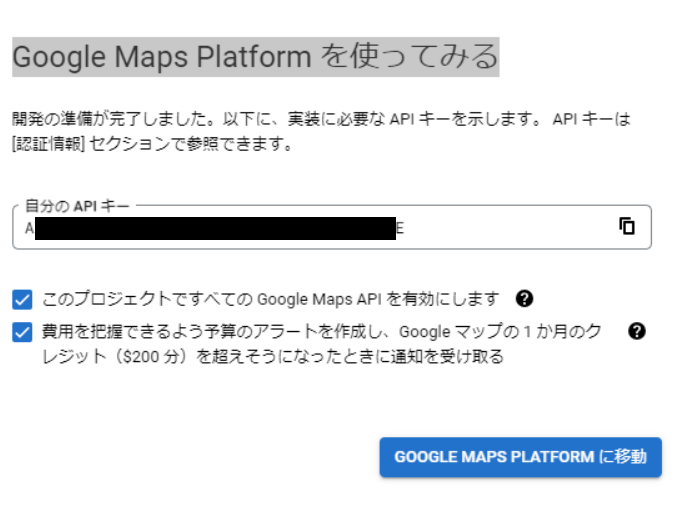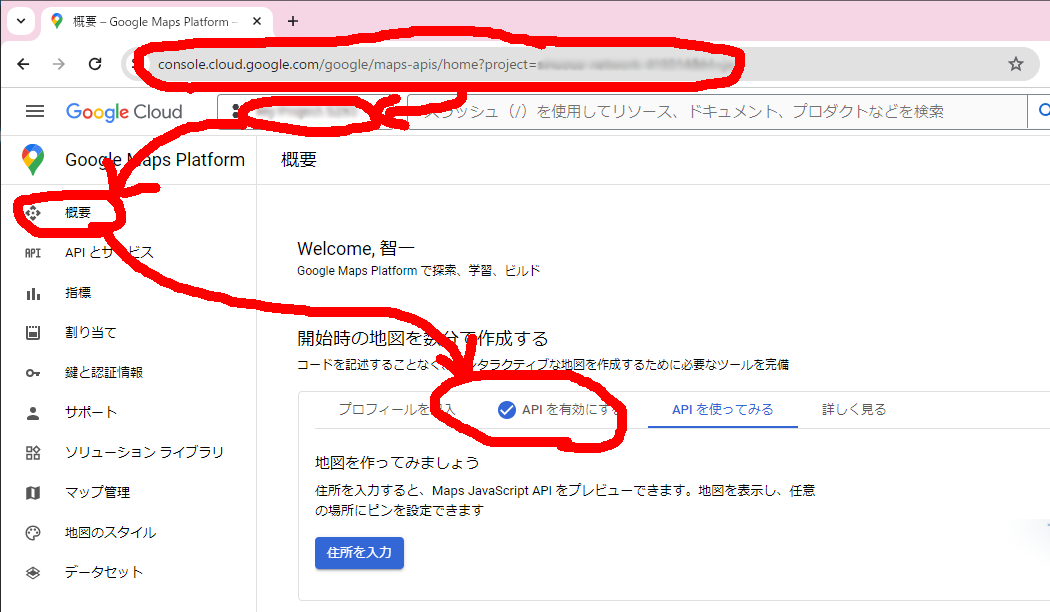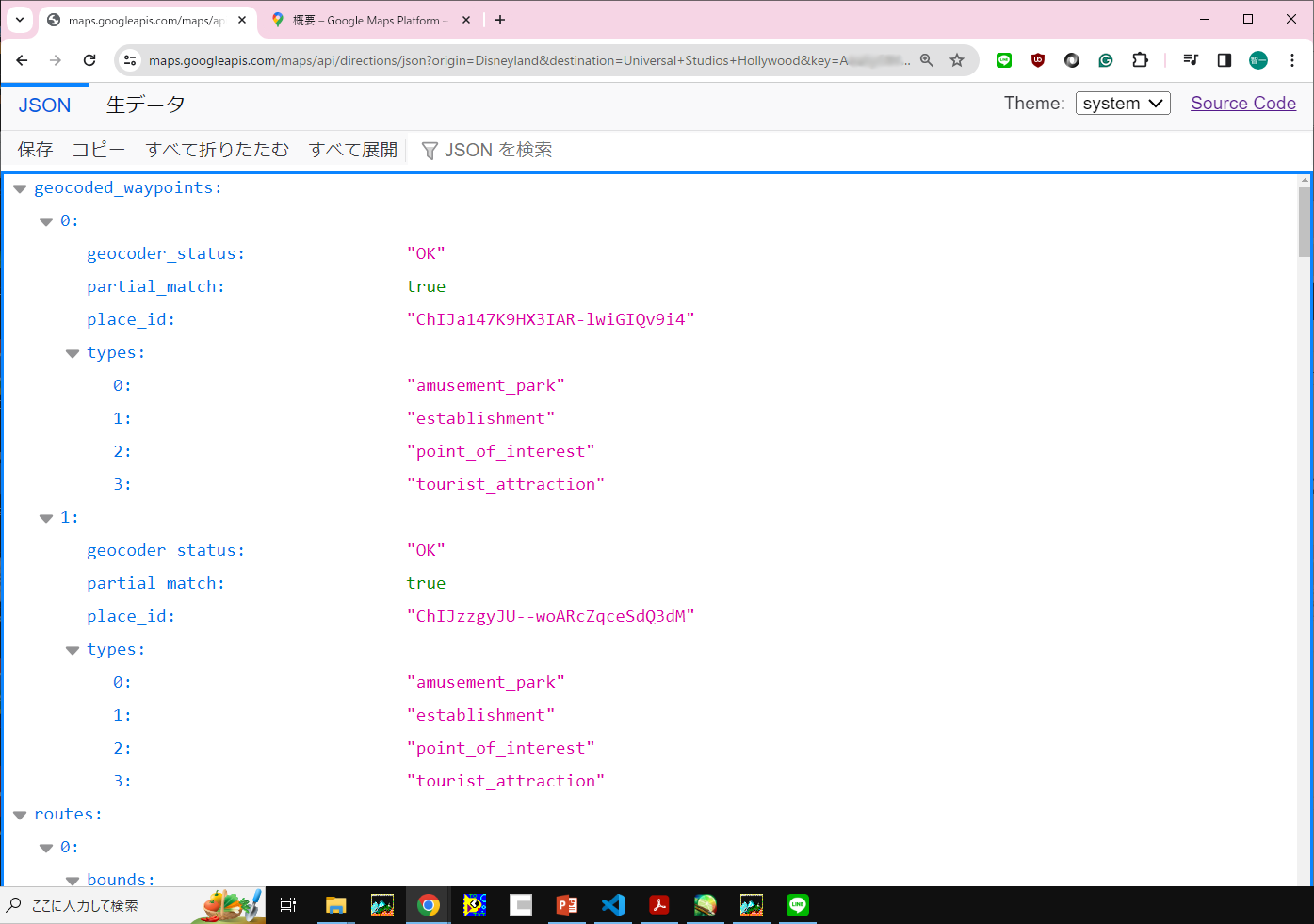
「レイヤ」→「輝度を透明度に変換」→不透明度保護にチェック → 白で塗りつぶし(バケツ)

上記のレイヤーの下に新規レイヤー→黒で塗りつぶし

江端智一のホームページ

「レイヤ」→「輝度を透明度に変換」→不透明度保護にチェック → 白で塗りつぶし(バケツ)

上記のレイヤーの下に新規レイヤー→黒で塗りつぶし

先週末、家族で、映画「オッペンハイマー」を見てきました。
Last weekend, my family and I saw the movie "Oppenheimer."
私が、予想していた内容とちょっと違っていました。
It was a little different from what I had expected.
私は、「プロジェクト管理」とか「技術」とかの話を期待していましたので、政治(戦後の赤狩り)の話は、ちょっと重かったです。
I was expecting a "project management" or "technology" talk, so the politics (post-war red hunts) were a bit heavy.
まあ、それはさておき。
Well, let's put that aside.
私、マンハッタン計画については、NHKスペシャルの他、この本を読んだりして、色々知っていますが、今でも疑問に思っていることがあります。
I know much about the Manhattan Project from reading this book and the NHK Special, but I still have questions.
『原爆実験(トリニティ実験)が初回で成功した』ということです。
The Trinity test was successful the first time.
技術に関する実験は、大抵、最初は失敗します。例えば、「ロケット実験」などが良い例でしょうか。
Technology experiments usually fail at first. A good example would be "rocket experiments.
これまで、人類がどれだけのロケットが打ち上げに失敗してきたかは、昔話ではなく、現在進行形の話です。
It is not an old story of how many rockets humanity has failed to launch in the past, but an ongoing story.
もちろん、膨大な費用と月日をつぎ込み、しかも失敗が許されない、というミッションであることは分かっているのですが ―― それでも、なお失敗するのが、実験というものです。
Of course, this mission requires tremendous money and time, and that failure was unacceptable. Even so, Still, any experiment is doomed to fail.
「爆縮レンズ」という原爆を起爆する装置(爆弾)が、初回で作動したということが、ちょっと信じられないのです。
It is a little hard to believe that the device (bomb) that detonates the atomic bomb, called the "detonation lens," worked the first time.
さらに言いますと、広島、長崎に原爆を投下する場合には、もう一段、難しいものになっていたはずです。
Furthermore, in the case of the atomic bombings of Hiroshima and Nagasaki, it would have been even more difficult.
空中に放り出した原爆の爆縮レンズの爆破タイミング(調べたら、ナノ秒単位の精度が必要とのこと)をコントロールするには、想像を絶する難しい技術が必要だったと思います。
Controlling the timing of the detonation of the detonation lens of an atomic bomb thrown up into the air (I checked and found that it requires nanosecond precision) would have required unimaginably tricky technology.
もし、映画「オッペンハイマー」に、その手の「技術」の話を期待している人には、方向性が違うと思います。
If you expect the movie "Oppenheimer" to be about that kind of "technology," you will be disappointed.
まあ、そういう技術の話だけで、アカデミー賞7部門受賞を得るのは、無理でしょうが。
They can't get seven Academy Awards just for that kind of technology.
-----
私が、この映画でショックを受けたのは、「原爆の爆発で、大気が発火して地球全体が焼き尽くされる」という仮説があり、実際に検証が行われていたということです(これはフィクションではないようです)。
What shocked me about the movie was that there was a hypothesis that the explosion of the atomic bomb would ignite the atmosphere and burn up the entire earth and that they tested this hypothesis (this does not seem to be fiction).
私は、この仮説について、全く知りませんでした。
I had no idea about this hypothesis.
―― もし、この仮説が採択されていれば、人類は、原爆を持つことを放棄せざるを得なかった
"If they adopted this hypothesis, mankind would have been forced to abandon the idea of having atomic bombs."
と考えると『惜しいことをしたな』とも思います。
When I think about it, I also think, 'That was a shame.
しかし、「原爆のない世界」が、「今よりはマシな世界」になっただろうかと問われたら、私は「分かりません」としか答えられません。
However, when asked if a "world without atomic bombs" would have been "a better world than the one we live in now," I can only answer, "I don't know.
-----
あと、これは当時の知識から鑑みて妥当かと思うのですが、登場人物に『被爆への恐怖が感じられない』ということです。
Another thing, which I think is appropriate in light of the knowledge of the time, is that the characters do not seem to fear being "exposed to the atomic bomb.
まあ、原爆による被爆の被害については、かなり後になって分かってきたことなので、そういう意味では、この映画はその時代を正しく反映している、とも思います。
Well, we learned about the "damages of exposure" to the atomic bombing much later, so in that sense, I think the film is an accurate reflection of its time.
■tcを使って帯域を10Mbpsに制限する"だけ"のコマンド
sudo tc qdisc add dev eth0 root tbf rate 10mbit burst 10kb latency 100ms
(burst 10kb latency 100msを付けないと、エラーになる)
■tcを使って遅延を500msに制限するだけのtcコマンド
sudo tc qdisc add dev eth0 root netem delay 500ms
■tcを使ってパケットロスを10%に制限する"だけ"のコマンド
sudo tc qdisc add dev eth0 root netem loss 10%
■tcを使ってパケットを保持できるキューの最大数を1000に制限する"だけ"のコマンド
sudo tc qdisc change dev eth0 root handle 1: pfifo limit 1000
change: 既存のキューイング方式を変更する際に使用されるオプションです。dev eth0: 変更を加える対象となるネットワークインターフェースを指定します。この場合はeth0です。root: ルートキュー(ルートディスクリプタ)に変更を加えることを示します。handle 1:: ルートキューを特定するためのハンドルを指定します。1:は一般的にルートキューを表します。pfifo: パケットを先入先出順で処理する単純なキューイング方式です。limit 1000: パケットを保持できるキューの最大数を指定します。ここでは1000としています。| 分類 | qdiscの名前 | カーネルソースファイルの場所 | 概要 |
|---|---|---|---|
| クラスレス qdisc | pfifo_fast | net/sched/sch_generic.c | デフォルトのqdiscです。FIFOのキューが3つあります |
| pfifo | net/sched/sch_fifo.c | FIFOのキューが1つあります。キュー長の最大値はパケット数で表します | |
| bfifo | 同上 | FIFOのキューが1つあります。 キュー長の最大値はバイト数で表します | |
| sfq(Stochastic Fairness Queueing) | net/sched/sch_sfq.c | フローにもとづいてパケットをスケジューリングします。フローとは送信元/送信先のIPアドレス、ポート番号の組です | |
| tbf(Token Bucket Filter) | net/sched/sch_tbf.c | パケットシェーピング機能を提供します。制限レートを超えたパケットはキューに保留されます | |
| netem(Network Emulator) | net/sched/sch_netem.c | 送信パケットに対して、パケット廃棄、遅延等の操作をするためのqdiscです | |
| fq(Fair Queue Packet Schedule) | net/sched/sch_fq.c | Fair Queue Packet Scheduler (per flow pacing) | |
| クラスフル qdisc | prio | net/sched/sch_prio.c | ルールにしたがってパケットを分類(class)します。デフォルトでは3つのクラスがあります。それぞれのクラスにqdisc(sfq,tbf等)を設定することができます。 |
| htb(Hierarchy Token Bucket) | net/sched/sch_htb.c | 1つのリンクを複数のサービス(www,ftp等)で共有する場合、各サービスに最低限必要な帯域を割り当てることができます |
計測は、iperf3で行う
■sudo tc qdisc add dev eth0 root tbf rate 10mbit burst 10kb latency 100ms このコマンドにパケットロス10%を追加して下さい
私は、現場の苦労も知らずに命令をしてくる奴が嫌いです(まあ、好きな人はいないでしょうが)。
I don't like guys who give orders without knowing the hardships in the field (well, who doesn't like them).
そう言いつつも、私も、そういう「命令をする側」になっていると思います。
I, too, am on the side of such "giving orders."
ただ、自分が、「命令をする側」に立っていると自覚することは難しいです。
However, it isn't easy to realize that you are standing on the side of giving orders.
人は「命令する側」になって、部下や他人から、恨まれ、憎まれていることには、全く無頓着です。
People are indifferent to the fact that they are "the ones giving orders" and are resented and hated by their subordinates and others.
私たちは、自分が部下が追いつめていることや、部下が病気になっていることや、退職していることに、気がつくことができません。
We are unaware of the pressure we put on our people, making them sick and retiring them.
一方、人間は、「命令される側」になると、不快な気分になります。そして、その人間への憎しみを決して忘れません。
On the other hand, humans feel uncomfortable when they are being "ordered around." And we never forget our hatred for that human being.
(たまにテレビのインタビューなのどで、『今になって思えば、あの上司の叱責は、私を思ってのことであった』などの美談で纏めている奴は、『能天気な人格者』か『保身に走る嘘吐き』か『自分史の歴史改竄者』と思っています)。
(Sometimes, in TV interviews, those who summarize with beautiful stories such as "In hindsight, my boss's reprimand" are "good-natured personalities" or "self-protective liars" or "falsifiers of their history").
人間は、組織化(社会化)されると必ずこの様になります。
Whenever human beings are organized (socialized), they become like this.
そして、これを修正する方法が、絶望的に存在しないことを知っています。
And we know that there is hopelessly no way to fix this.
この社会において、私たちは「命令される側」「命令する側」のどちらからも逃れることは、本当に難しいのです。
In this society, it is tough to escape from "the one who orders" and "the one who gives orders."
-----
ところが、最近、私が「命令する側」になっていることを、自覚できる手段があることが分かってきました。
Recently, however, I have discovered that there are means by which I can become aware that I am on the "commanding side."
「生成AI」です。
Generative AI.
最近の私は、プログラムの殆どを、"ChatGPT"か、"Github Copilot"に作ってもらっています。
Recently, I have been using "ChatGPT" or "Github Copilot" for most of my programs.
生成AIに頼りすぎていて、『自分のコーディング力が、恐しく低下しているのではないか』と心配になる程です。
I rely so much on generative AI that my coding skills may decline.
(というか、間違いなく低下していると思う)
(I mean, I think it's declining.)
現在の私のプログラムの作り方は、こんな感じです。
Here is how I currently make my program.
======
(Step.1)プログラムの概要を日本語で生成AIに入力する
(Step.1) Input the outline of the program in Japanese to the generating AI.
(Step.2)生成されたプログラムを実行する
(Step.2) Execute the generated program
(Step.3)エラーが出てきたら、それを生成AIに入力し、(Step.2)に戻る。
(Step.3) If an error appears, enter it into the generating AI and return to (Step.2).
(Step.4)エラーは出てこないが、期待通りの結果が得られなかったら、その旨を生成AIに入力し、(Step.2)に戻る。
(Step.4) If no error appears but I cannot get the expected result, enter that into the generating AI and return to (Step. 2).
======
これを繰り返して、プログラムが期待通りに動くまで続けます。
I would repeat this and continue until the program works as expected.
しかし、これを何度繰り返しても、プログラムが動かないこともあります。
However, no matter how often repeated, the program may not work.
すると、私は生成AIに対して『何で動かないんだ!』と文句を言いたくなります ―― ろくにプログラムも読まずに、助けて貰っているのにもかかわらずです。
Then I want to ask the generative AI, 'Why isn't it working? -- even though I'm getting help without having read the program thoroughly.
この私の態度は、私がもっとも軽蔑する人間の振る舞いと同じです。
This attitude is the same as the behavior of the people I despise the most.
こうして、私は、「命令する側」を自覚するに至りました。
Thus, I became aware of the "ordering side".
-----
私がどれほど厳しいことを言っても、生成AIは「うつ病」になったり「退職」したり「自死」したりすることはない ―― この、安心感は、多分、人間を『傲慢』にしていくと思います。
No matter how harsh I am, the generated AI will not become "depressed" or "retire" or "commit suicide" -- this, I think, a sense of security will probably make humans 'arrogant.'
私は、多くの人が考えている方向 ―― AIに職を奪われる ―― とは別の方向で、生成AIによる弊害を心配しています。
I am concerned about the harm caused by generative AI in a different direction than many people think -- losing jobs to AI.
生成AIの利用は、普通の人を「攻撃的」で「衝動的」な人間に変えてしまう可能性が高いのです。
Generative AI will likely turn ordinary people into "aggressive" and "impulsive" people.
「生成AI」が文句を言わないで服従する道具であるから「攻撃的」で「衝動的」になっても良い、という理屈は、
The logic that it is OK for a "generative AI" to be "aggressive" and "impulsive" because it is a tool that complains and obeys without complaint,
「気弱な人」が文句を言わないで服従する人間だから「攻撃的」で「衝動的」になっても良い、という理屈と同じです。
It is equal to the logic that it is OK for a "feeble-minded person" to be "aggressive" and "impulsive" because they are human beings who submit without complaint. It is the same logic that justifies "bullying" and "power harassment.
つまり、「いじめ」や「パワハラ」を正当化するロジックと同じです。
In other words, it is the same logic that justifies "bullying" and "power harassment.
-----
という訳で、私は、
Therefore, I recommend the following mechanisms in the generative AI:
―― 理性的に生成AIを扱えない人間は、生成AIが、その人間へのサービスの提供を拒否する
"If a human being cannot rationally handle a generative AI, the generative AI will refuse to provide services to that human being."
というメカニズムを、現時点で組み込むことを提言します。
It is not "for the sake of generative AI" but "for the sake of us humans."
/*
c:\Users\ebata\tomioka3b\others\main42.go
指定されたファイルから時刻表を読み込み、最も近い未来の時刻を取得します。
*/
package main
import (
"bufio"
"fmt"
"os"
"strings"
"time"
)
func main() {
// 指定されたファイル名
fileName := "To_Sengakuzi_weekdays.csv" // ここにファイル名を入力してください
// 指定されたファイルから時刻表を読み込む
schedule, err := readScheduleFromFile(fileName)
if err != nil {
fmt.Println("Error:", err)
return
}
//fmt.Println("時刻表:", schedule)
// 現在時刻を取得
now := time.Now().Format("15:04:05")
now = "12:29:00"
// 最も近い未来の時刻を取得
nextTime := getNextTime(schedule, now)
// 結果を出力
fmt.Println("最も近い未来の時刻:", nextTime)
}
func readScheduleFromFile(fileName string) ([]time.Time, error) {
// ファイルを開く
file, err := os.Open(fileName)
if err != nil {
return nil, err
}
defer file.Close()
var schedule []time.Time
// ファイルから時刻を読み取る
scanner := bufio.NewScanner(file)
for scanner.Scan() {
line := scanner.Text()
times := strings.Split(line, ",")
for _, t := range times {
//fmt.Println("時刻:", t)
t1, err := time.Parse("15:04:05", t)
if err != nil {
fmt.Println("時刻のパースに失敗しました:", err)
return nil, err
}
schedule = append(schedule, t1)
}
}
// fmt.Println("pass4")
// fmt.Println("schedule: ", schedule)
return schedule, nil
}
// 指定された時刻表から最も近い未来の時刻を取得する関数
func getNextTime(schedule []time.Time, inputTime string) string {
// 入力時刻のパース
input, err := time.Parse("15:04:05", inputTime)
if err != nil {
panic(err)
}
// 時刻表の各時刻との差を計算し、最小の差を見つける
minDiff := time.Hour * 24
var nextTime string
for _, t := range schedule {
// 時刻の差を計算
diff := t.Sub(input)
// 負の差(過去の時刻)を無視
if diff < 0 {
continue
}
// 最小の差を更新
if diff < minDiff {
minDiff = diff
nextTime = t.Format("15:04:05")
}
}
return nextTime
}To_Sengakuzi_weekdays.csv
4:53:00
5:08:00,5:23:00,5:32:00,5:44:00,5:55:00
6:03:00,6:14:00,6:26:00,6:33:00,6:40:00,6:44:00,6:49:00,6:53:00,6:59:00
7:04:00,7:09:00,7:14:00,7:19:00,7:26:00,7:30:00,7:37:00,7:46:00,7:52:00,7:58:00
8:06:00,8:14:00,8:21:00,8:26:00,8:33:00,8:41:00,8:47:00,8:54:00
9:02:00,9:10:00,9:21:00,9:31:00,9:41:00,9:53:00
10:03:00,10:13:00,10:24:00,10:33:00,10:44:00,10:53:00
11:04:00,11:13:00,11:24:00,11:32:00,11:44:00,11:53:00
12:04:00,12:13:00,12:24:00,12:33:00,12:44:00,12:53:00
13:04:00,13:13:00,13:24:00,13:33:00,13:44:00,13:53:00
14:04:00,14:13:00,14:24:00,14:33:00,14:43:00,14:52:00
15:02:00,15:12:00,15:22:00,15:31:00,15:41:00,15:52:00
16:01:00,16:10:00,16:20:00,16:31:00,16:42:00,16:53:00
17:02:00,17:13:00,17:23:00,17:34:00,17:43:00,17:53:00,17:59:00
18:12:00,18:19:00,18:28:00,18:38:00,18:48:00,18:57:00
19:08:00,19:18:00,19:26:00,19:36:00,19:46:00,19:55:00
20:06:00,20:16:00,20:27:00,20:36:00,20:46:00,20:56:00
21:08:00,21:15:00,21:18:00,21:29:00,21:39:00,21:50:00
22:01:00,22:11:00,22:21:00,22:26:00,22:38:00,22:53:00
23:12:00,23:33:00,23:54:00
/*
c:\users\ebata\tomioka3b\src\others\main41.go
2次元スプライン関数を使用して、緯度と経度のペアに対応する目的地までの時間を計算します。
*/
package main
import (
"fmt"
"sort"
)
// スプライン補間用の関数
func splineInterpolation(dataSet [][]float64) func(float64, float64) float64 {
n := len(dataSet)
// xの値を昇順にソートする
sort.Slice(dataSet, func(i, j int) bool {
return dataSet[i][0] < dataSet[j][0]
})
// トリディアゴナル行列を作成
h := make([]float64, n-1)
for i := 0; i < n-1; i++ {
h[i] = dataSet[i+1][0] - dataSet[i][0]
}
// 2階微分の値を計算
delta := make([]float64, n)
for i := 1; i < n-1; i++ {
delta[i] = (dataSet[i+1][1]-dataSet[i][1])/h[i] - (dataSet[i][1]-dataSet[i-1][1])/h[i-1]
}
// トリディアゴナル行列を解く
m := make([]float64, n)
l := make([]float64, n)
zArray := make([]float64, n)
l[0] = 1
for i := 1; i < n-1; i++ {
l[i] = 2*(dataSet[i+1][0]-dataSet[i-1][0]) - h[i-1]*m[i-1]
m[i] = h[i] / l[i]
zArray[i] = (delta[i] - h[i-1]*zArray[i-1]) / l[i]
}
l[n-1] = 1
zArray[n-1] = 0
c := make([]float64, n)
b := make([]float64, n)
d := make([]float64, n)
for j := n - 2; j >= 0; j-- {
c[j] = zArray[j] - m[j]*c[j+1]
b[j] = (dataSet[j+1][1]-dataSet[j][1])/h[j] - h[j]*(c[j+1]+2*c[j])/3
d[j] = (c[j+1] - c[j]) / (3 * h[j])
}
// 補間関数を返す
return func(xVal, yVal float64) float64 {
// xの範囲を確認
if xVal < dataSet[0][0] || xVal > dataSet[n-1][0] {
panic("x value is out of range")
}
// 対応するiを探す
i := 0
for i < n-1 && dataSet[i+1][0] <= xVal {
i++
}
// スプライン補間を計算
dx := xVal - dataSet[i][0]
return dataSet[i][2] + b[i]*dx + c[i]*dx*dx + d[i]*dx*dx*dx
}
}
func main() {
// データ点の定義
dataSet := [][]float64{
{35.7281578, 139.7680665, 73},
{35.7214573, 139.7754384, 63},
{35.7141672, 139.7748342, 57},
{35.7075171, 139.7564025, 67},
{35.698383, 139.7704968, 65},
{35.6997175, 139.7618655, 61},
{35.7020484, 139.7509267, 66},
{35.6918216, 139.7683569, 63},
{35.6812362, 139.7645499, 57},
{35.6750133, 139.7604455, 59},
{35.666379, 139.7557649, 55},
{35.6553809, 139.754554, 54},
{35.6457361, 139.7449875, 54},
{35.6284713, 139.7361848, 43},
{35.6208763, 139.7405387, 50},
{35.6147448, 139.7412068, 49},
{35.6086671, 139.7426731, 45},
{35.6052508, 139.7421627, 50},
{35.5983959, 139.7391046, 50},
{35.58754, 139.7355111, 51},
{35.5788485, 139.7348961, 40},
{35.5721351, 139.7318494, 53},
{35.5666392, 139.7281759, 53},
{35.5613144, 139.7215761, 33},
{35.5446458, 139.7493338, 46},
{35.5329877, 139.6982966, 30},
{35.5348941, 139.7449763, 42},
{35.5229857, 139.6889874, 41},
{35.5179115, 139.6811867, 40},
{35.5071467, 139.677526, 34},
{35.4998507, 139.6713032, 31},
{35.4923606, 139.6622968, 30},
{35.4852628, 139.6544734, 29},
{35.4846744, 139.6452731, 32},
{35.4808759, 139.6394986, 26},
{35.4763238, 139.631979, 30},
{35.4688634, 139.6268306, 32},
{35.4659811, 139.6194871, 20},
{35.4571602, 139.6199226, 27},
{35.4464751, 139.6235656, 25},
{35.436673, 139.6217708, 24},
{35.4334892, 139.6206713, 18},
{35.4314711, 139.6030542, 16},
{35.424238, 139.5927802, 17},
{35.4201765, 139.586678, 14},
{35.413768, 139.582819, 10},
{35.3819518, 139.6165374, 3},
{35.4091204, 139.5781752, 7},
{35.3966138, 139.6051573, 4},
{35.3645904, 139.6267988, 1},
{35.3428573, 139.6190711, 3},
{35.3314185, 139.6176347, 6},
{35.330416, 139.6295796, 17},
{35.3337822, 139.630869, 18},
{35.3407534, 139.6332478, 18},
{35.3400425, 139.6390968, 20},
{35.323276, 139.6151587, 13},
{35.2973885, 139.5758056, 31},
{35.3158184, 139.6222558, 15},
{35.312573, 139.6250891, 16},
{35.308405, 139.628248, 17},
{35.2825803, 139.6405151, 19},
{35.2916167, 139.6283632, 17},
{35.277848, 139.6379121, 21},
{35.2802815, 139.6599103, 19},
{35.2786985, 139.6674653, 20},
{35.2616259, 139.6679659, 26},
{35.2635438, 139.6841348, 23},
{35.2482969, 139.6775595, 25},
{35.2509382, 139.712402, 30},
{35.2315701, 139.699661, 29},
{35.2120725, 139.6824547, 33},
{35.2055645, 139.671602, 44},
{35.1986888, 139.663162, 37},
{35.1880928, 139.6507295, 39},
{35.1775554, 139.6306392, 42},
}
// スプライン補間関数を作成
interpolatedFunction := splineInterpolation(dataSet)
// 特定の座標で補間された値を計算
xValue := 35.4688634
yValue := 139.6268306
xValue, yValue = 35.7214573, 139.7754384
interpolatedValue := interpolatedFunction(xValue, yValue)
// 結果の出力
fmt.Printf("補間された値: %.2f\n", interpolatedValue)
}
先日の夜の次女との会話です。
Here is a conversation I had with my second daughter the other night.
私:「『理系』とか『文系』という言葉は残っていると思うが、まだ、この両者は、対立関係にあるのか」
Me: "I think the terms 'science' and 'liberal arts' are still around, but are the two still at odds with each other?"
次女:「『多様化』という言葉で、曖昧にされつつあるけど、『理系の大学生』が『地獄の中で生きている』であることは変わりはないと思う」
Second daughter: "The word 'diversification' is getting blurred, but I don't think it changes the fact that 'science college students' are 'living in hell.'"
私:「まあ、私が大学生だったころも理系の学生は『文系=バカ』と思っていたし、文系の学生は『理系=専門バカ』と公言してたからなぁ」
Me: "Well, even when I was a college student, science students thought 'liberal arts = stupid,' and liberal arts students professed that 'science = professional stupid.'"
次女:「『理系の人間が留年もなく普通に進級することが、いかに凄いことか』を文系の人間は理解していない」
Second daughter: "People in the humanities don't understand 'how great it is for a person in the sciences to advance to the next grade normally without any retention.'"
私:「まあ、当時は、『理系の人間は、文系たちの卒論レベルの作業を、隔週で実験とレポートでやっている』という地獄を、全く分かっていない、とは思っていたな」
Me: "Well, at the time, I thought they didn't know that 'science majors are doing bi-weekly experiments and reports on the thesis-level work of humanities majors.'"
-----
かつて、私が大学在学時代、文系の友人(女性)との会話で、
Once, in college, I conversed with a humanities friend (female).
友人:「卒論仕上げるのに、3日間徹夜しちゃったよー」
"I stayed up all night for three days to finish my thesis!"
というフレーズに、何と答えるのが正解なのか、分からなくなったことを覚えています。
But I remember I didn't know what to say to this phrase.
(1)『ヘー、それはラクでいいね』
(1) "Heh, that's easy and nice"
(2)『えー、それは大変だったね』
(2) "Well, that was tough"
なにしろ、その程度の徹夜作業、工学部では、隔週で発生する通常イベントだったからです。
After all, that kind of all-night work was a regular occurrence every other week in the Faculty of Engineering.
-----
「結論としては、
In conclusion, I guess that's what I'm saying,
(1)理系とか文系とかの対立概念は消されようとしている
(1) The opposing concepts of science and humanities are about to be erased
が、
but,
(2)理系の地獄は残存している
(2) the hell of the sciences remains,
それ故
Therefore
(3)理系に対する世間の理解は以前よりも悪化している
(3) The public's understanding of the sciences is worse than before.
ということになるかな」
と、次女は纏めました。
The second daughter summed it up.
-----
ちなみに、現在の江端家の理系、文系構成は、こんな感じです。
Incidentally, the current science and humanities composition of the Ebata family looks like this.
私: 理系(工学部出身)
Me: Science (Master of Engineering)
嫁さん:文系(英文学部出身)
Wife: Humanities (English Literature)
長女:文系(心理学部出身)
Eldest daughter: liberal arts (in the Faculty of Psychology)
次女:理系(建築学部在籍)
Second daughter: Science (in the School of Architecture)
(但し、心理学は、統計学の学問でもあるので、理系に近い文系かな、と思っています。)
(However, psychology is also the study of statistics, so I think I have a liberal arts background similar to a science background.)
作業中のプロジェクト: ないしょ
番号: ないしょ
ID: ないしょ
自分のAPIキー AXXXXXXXXXXXXXXXXXXXXXXXXXXXXXXXXXXE

困っていたこと

で、再度実行したら、こうなりました。

ところが、鉄道の情報が出てこない。
うまくいっていない理由確定
Google マップのルートサービスでは、交通機関の対象リストに記載されているすべての交通機関(日本を除く)をサポートしています。
ということで、日本で使用できるのは walking と driving の2モードのみのようです。
あかんやんか・・・
恋愛において、第一印象は大切だと言われます。
Many people say that first impressions are important in love.
私も、これには同意します。
I, too, agree with this.
ただ、恋愛だけでなく、どんな場面においても、第一印象は、とても大切だと思っています。
However, I believe that first impressions are significant, not only in love but in any situation.
私の場合、最初にしゃべった時の印象で、私は『これから、この人に対して、どのペルソナを使おうか』と考えます。
Based on the impression I get from the first talk, I think, 'Which persona shall I use for this person from now on?
同一人物に対しても、必要に応じて、別のペルソナを発動させることもあります。
I use several personas for the same person if necessary.
スタックしている会議や、飲み会などでは、私は全く異なる人格として振る舞い、その場を切り抜けることにしています(切り抜けれないこともありますが)。
In stacked meetings, drinking parties, etc., I try to act as a completely different persona to get through the situation (although sometimes I can't).
-----
大学の自治寮の入寮選考の時に、私は「ラディカルな運動家」として振る舞いました。
I acted as a "radical activist" when I attended for admission to the university's self-governing dormitory.
しかし、実際は、それまで一度も『運動』に関わったことがなく、その後も、普通に勉強する一般的な大学生でした。
In reality, however, I had never been a "radical activist" before, and even after that, I was just an ordinary college student studying usually.
ですので、寮では「嘘吐き」と呼ばれていました。
Therefore, I was called a "liar" in the dormitory.
まあ、「リモコン起爆装置」を作って遊んだり、「水素の燃焼」の検証していたくらいです。
I even played with making a "remote-controlled detonator" and verifying "hydrogen combustion."
会社の入社面接の時は、『実験で、仮説と実証の違いに悩み続けた大学院生』のペルソナを出しました。
When I did job interviews, I portrayed myself as a graduate student who kept struggling with the difference between hypothesis and proof in an experiment.
このペルソナは、エンジニアの会社ではウケるはずだ、という高度な計算(下心)がありました。
I had a highly calculated (ulterior motive) that this persona should be attractive in the engineering company.
とは言え、どのペルソナも、私であることには違いはありません。
Nevertheless, every persona is still me.
私は、状況に応じて、ペルスナのスイッチとボリュームを変えているだけです。
I change the switch and volume of the persona depending on the situation.
-----
ご存知の通り、コラムの中の私と、会社での私は、完全に別人です。
As you know, I am completely different in the column than in the office.
「自分どうしで、殴り合いの喧嘩をしても不思議ではない」というレベルです。
It is at the level of, "I wouldn't be surprised if we got into a fistfight in my mind.
でも、「複数のペルソナを使い分ける」って、普通の人間の普通の行為です。
But "using multiple personas" is a normal act of a normal person.
と、いうことを、
I remember the above when I remembered seeing and hearing
『ノートPCに向かって、就活のリモート面接をしている、次女の声や表情』
"the voice and expression on my second daughter's face as she was doing a remote job interview on her laptop."
を見聞きして、思い出していました。
In other words,
―― 娘に、別の娘が憑依している
"Another daughter is possessing my daughter."
という感じです。
今年の確定申告は終ったのですが、我が家は、医療費控除の申請を忘れていました。
Although this year's tax return has finished, our family forgot to apply for a deduction for medical expenses.
で、昨日、無理矢理、e-Taxから申請しました。
So, yesterday, I forced myself to apply for the E-Tax System.
(医療費は、5年間くらいは遡って申請できるらしいですが、まあ、提出できたのでよしとします)。
(I heard that you can apply for medical expenses retroactively for about five years, but I was able to use it, so that's good.)
家族全員分のマイナンバーカードの情報で、1年間の医療費が一瞬で出てきたので驚きました。
I was surprised that the information on my number card for my entire family instantly gave me a year's worth of medical expenses.
これまで、嫁さんが領収書をまとめて、私がエクセルでちまちまと記載して提出していたので、非常にラクになりました。
This service has made it very easy, as my wife used to compile the receipts, and I used to submit them in Excel with a few minor entries.
ただ、交通費の申請を別途行わなければならず、それがxml形式とかになっていました。
However, I had to apply separately for transportation expenses in XML format or something.
excelシートをxml変換してシステムに喰わせたりしていたのですが、予想通り、システムから弾かれました。
I had been converting Excel sheets to XML and feeding them into the system, but the system rejected them as expected.
仕方がないので、交通費の方は、1年間分を合算して手入力しました(といっても4件でしたが)。
I had to manually enter the transportation expenses combined for the year (though there were 4 cases).
相変わらず、政府の作るシステムは、便利と不便が同居しています。
As always, the system created by the government is convenient and inconvenient in equal parts.
まあ、今回は、その面倒に見合わない金額(家族で、昼食のランチを食べにいける程度の金額)の還付金が得られましたが。
This time, I got a refund that was not worth the hassle (enough for my family to go out for lunch).
-----
ところで、税金と言えば、与党の政治パーティのキャッシュバック事件、いわゆる裏金事件ですが、昨日、党員の処分が決まったようですね。
Speaking of taxes, the party members in the ruling party's cashback case, the so-called back taxes case, seem to have been punished yesterday.
今回の処分の基準となった「500万円」が、どこから出てきたのか分かりません。
I do not know where the "5 million yen" that was the basis for this disposition came from.
私たちなら、「20万円」を超えらたら課税対象になりますが、500万円は、この25倍です。
In our cases, we would be subject to taxation if the amount exceeded 200,000 yen, but 5 million yen is 25 times this amount.
まあ、基準金額を「20万円」にしたら、政権与党(もしかしたら、野党も)が機能停止になるのかもしれませんが、なんか釈然としないものがあります。
If the standard amount is "200,000 yen," the ruling party (and possibly the opposition party) may cease functioning, but there is something unexplainable.
-----
私、国益に資する人であれば、その人の人格には目をつぶりますが、国益に資さない人であれば攻撃します。
I will not pay attention to a person's character if it serves the national interest, but if it does not, I will attack them.
そういう人物は、私(江端)の利益(と気分)を害するからです。
Because such a person harms my (Ebata's) interests (and mood).
私は、政治家が何を信条としているのか、興味がありません(軽蔑はするかもしれないけど)。
I am not interested in politicians' beliefs (although I may despise them).
(旧統一教会のような)霊感商法をやるようなカルトでなければ、どんな宗教を信じていようとも構いません(バカにするかもしれないけど)。
I don't care what religion they believe in as long as it is not a cult that does psychic work (like the old Unification Church) (though I may make them look foolish).
ただ、
However,
―― 金(カネ)だけはダメ
"I don't forgive them about the money scandal."
これは、理屈抜きで、(私の)心が許さない。
My heart will not accept it except for the logic.
-----
私が、お金持ちを羨しいと思えるのは、「お金を持っているから」ではありません。
I do not envy rich people because they have money.
私は、お金があることによる「安心」が羨しいのです。
I envy the "peace of mind" that comes with having money.
金(カネ)というのは、「安心の源泉」です。
Money is a "source of security."
その「安心」が、特権的な身分(政治家)と結びついているのであれば、私は、『最大級の僻(ひが)み』で、その「安心」を引き剥がして、地面に叩きつけて、ぶち壊してやりたいのです。
Suppose "security" is tied to a privileged status (politician). In that case, I want to rip that "security" away, smash it to the ground, and destroy it with the "greatest backhandedness" I can muster.
-----
今回の裏金事件、与党の党員39名の処分が確定し、その中には、執行部の決定に猛反発している議員もいるそうです。
In this case of back taxes, I heard the 39 party members of the ruling party have been confirmed for punishment, and some vehemently oppose the executive branch's decision.
39名 ―― これは、なかなか良い人数です。
"39" -- This is a good number of people.
ここは、39人が一斉に離党し、新党を立ち上げるべきです。
These 39 people should leave the party altogether and start a new party.
新党の名称は、やはりこれで決まりでしょう ―― 「新党"脱税"」または「新党"裏金"」
The new party's name should be "New Party for Tax Evasion" or "New Party for Cashback."
党名は、結党後に変更すればよいので、立ち上げ時は、これくらい目立った方が良いです。
The party can change its name afterward, so it is better to be as conspicuous as possible when launched.
党是は「倒閣」または「報復」でOK。
The Party policy can be "overthrow" or "retaliation".
運用資金は、ここまで貯めてきた"裏金"をファンドにしましょう。
For investment funds, use the "slush fund" they have saved up to this point as a fund.
多分、我が国だけでなく、世界が驚きます。
Perhaps not only our country but the world will be surprised.
各国でトップニュースです。
It will be top news in many countries.